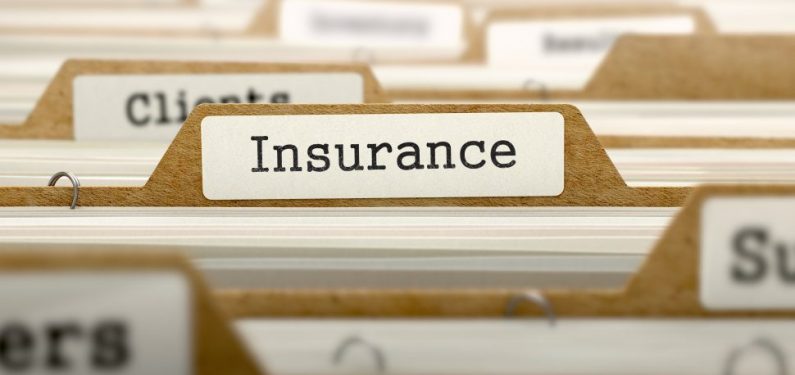
What to Know About the Insurance Policy DEC Page
April 28, 2022Every year at the renewal of your insurance policies, whether it is your Homeowner, Personal Auto, Snowmobile, Boat, Business, Farm, Commercial Auto, etc., you receive information concerning your policies in the form of a document called the “Declarations Page,” or “DEC” for short. This paper provides very important information regarding your policy. Here’s what to know about the insurance policy DEC page including what information you would find, the different parts, why it is important, and how you can obtain a copy:
What Information Can be Found on the DEC Page?
To begin, the insurance policy Declarations Page provides some very basic, but extremely important, information.
1. Named Insured and Addresses
You will find your name or your company name if it is a business. This is referred to as the “Named Insured.” It is the person or entity that the policy is primarily protecting.
It may list an individual, a partnership, an LLC, a corporation, etc. The mailing address of the insured, as well as the address of the insured location, will be present. This is an important item to check when it comes to business succession planning and insurance.
2. Policy Type, Number, Term, and Premium
The type of policy and the policy number can be found on the DEC. The dates for the term of the policy would be found on the DEC as well.
The premium owed for the term of the policy will be listed along with any discounts that may apply. If there is a mortgagee on the property, that will show.
3. Information About the Insurance Provider
Another important bit of information will be the name and address of the insurance company that provides the coverages. Also listed is the name, address, and contact information of the agency that represents the insurance company and works with you in having a comprehensive policy. You may also find contact information such as phone numbers and email addresses for the agent or the insurance company.
4. Coverages, Liability Limits, and Deductibles
The bulk of the information will be highlighting your coverages, limits of liability, and deductibles. This may include descriptions of buildings, personal or business personal property, automobiles, liability limits, as well as other information. You will see the premium or cost of each line of insurance and a total policy term premium.
5. Endorsements, Perils Covered, Exclusions, and Added Coverage Options
There will be a list of all the applicable endorsements that apply to the policy and coverages. These forms describe and explain the perils covered (covered losses), exclusions (things not covered), coverage options that may be available or have been added to the policy, and additional property protected that is not part of the initial premises. For example, does homeowners insurance cover damage to your home? What is and is not currently covered under your homeowner’s policy will be described on the DEC page.
The DEC Page Can Help You Understand Your Insurance Coverage
All of this information is extremely important and is part of your insurance contract/policy that you have purchased to protect your family and assets. This would be the first place to look to see and understand what and how you are protected in the event of an incident that may lead to an insurance claim.
The DEC page can also be a useful resource when you are evaluating and comparing insurance proposals and can help you pick the best insurance quote for you. This page will show what individuals are protected by the policy. It identifies who else may be protected by your policy such as a mortgage company on real estate or a loss payee on a vehicle or piece of equipment.
Insurance changes when households break up, expand, or change, which is why it’s important to review the DEC page and make sure anyone who needs coverage is listed and anyone who should no longer be covered is not listed. The insurance policy DEC page is also where you look to know when your premium is due and how much is owed.
You Receive a Declarations Page for Each Renewal of Your Policy
The renewal date is commonly when to review your homeowners’ insurance and other policies. There are other times you should review your insurance coverage, but annually before the renewal date is a minimum. The Declarations Page is the document that is sent out to you at each renewal of your policy. Typically, this is either annually or semi-annually. You should receive it anywhere from 14 to 45 days before the anniversary date of your policy.
We would recommend that you keep at least two years of historical policies in your file for reference. If you happen to misplace your copy, the easiest way to obtain a copy is to contact your insurance agent. They should have one on file and if not, will be able to contact the company to obtain one very quickly on your behalf.
The DEC Page is the Heart and Soul of an Insurance Policy
To conclude, the DEC page is the heart and soul of the insurance policy. It is the” go-to document”, and it provides the most critical information regarding your insurance protection. Keep one filed for easy assessment at all times.
If you have additional questions or inquiries regarding your DEC page, you may call any of our insurance professionals here at Ruhl Insurance and we will be happy to discuss them with you. We can be reached at 800-537-6880 or direct at 717-665-2283.
Disclaimer: Information and claims presented in this content are meant for informative, illustrative purposes and should not be considered legally binding.

